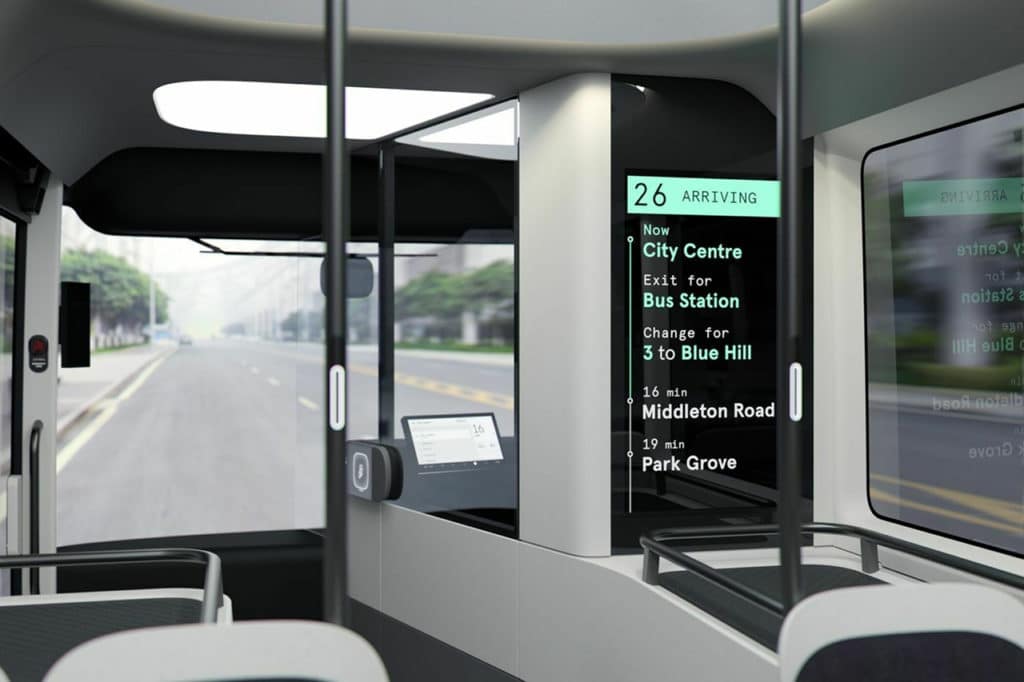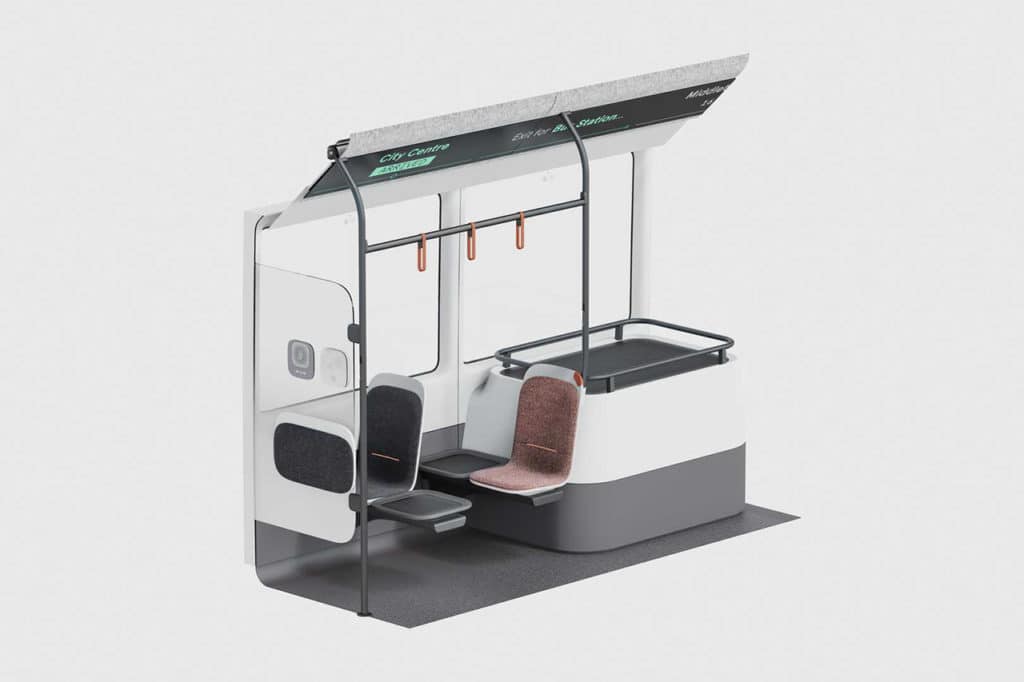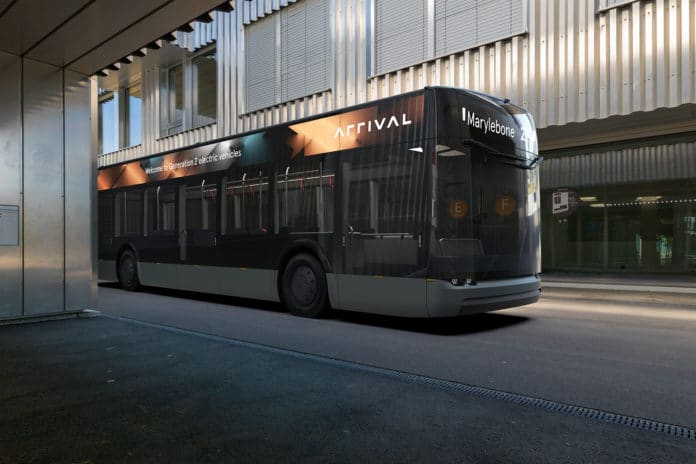The current pandemic has underlined the importance of public transport for local communities around the world. In turn, Arrival buses are the tool that will help cities adapt to new normal and make travel on the bus appealing, sustainable, and financially viable.
The British startup showed the concept of a zero-emission, all-electric bus. Its prototype looks like a regular city transport – with four wheels, panoramic windows, and lots of seating – but integrated with high-tech solutions. According to the startup itself, the zero-emission Arrival Bus should transform the public transport industry at a time when it is facing the biggest problems associated with the pandemic.

Credits: Arrival
First of all, the interior of the Arrival electric bus is equipped with a large number of screens, on which passengers will see all the necessary information about trips and upcoming stops. The exterior displays will notify passengers how much seating is available and which doors are most suitable to enter for boarding. In the long run on these screens, it will be possible to show dynamic commercials or animations.
Besides, the interior of the bus is customizable, with removable seats, so you can create additional space between passengers – as part of compliance with social distance. Along with the social distancing-approved seating configuration, the bus uses unique touchless technology. Passengers can request a stop via smartphone before they even set foot on the Arrival Bus, and the no-touch bells let them signal for a stop.

Credits: Arrival
Arrival Bus uses the same “skateboard” platform as the van, which features a linear aluminum chassis housing modular components, including batteries, motor, and the drivetrain. With all the mechanical parts contained in the chassis, the vehicle has more usable floor space than traditional buses.
Depending on the modification, the bus can have a length of 10 to 15 meters. At the maximum size, such public transport can accommodate up to 125 passengers, most of whom will have to travel standing. The seats are made without legs with wall mounts to facilitate cleaning and disinfection.
When the project will be launched into production, the company did not specify.
